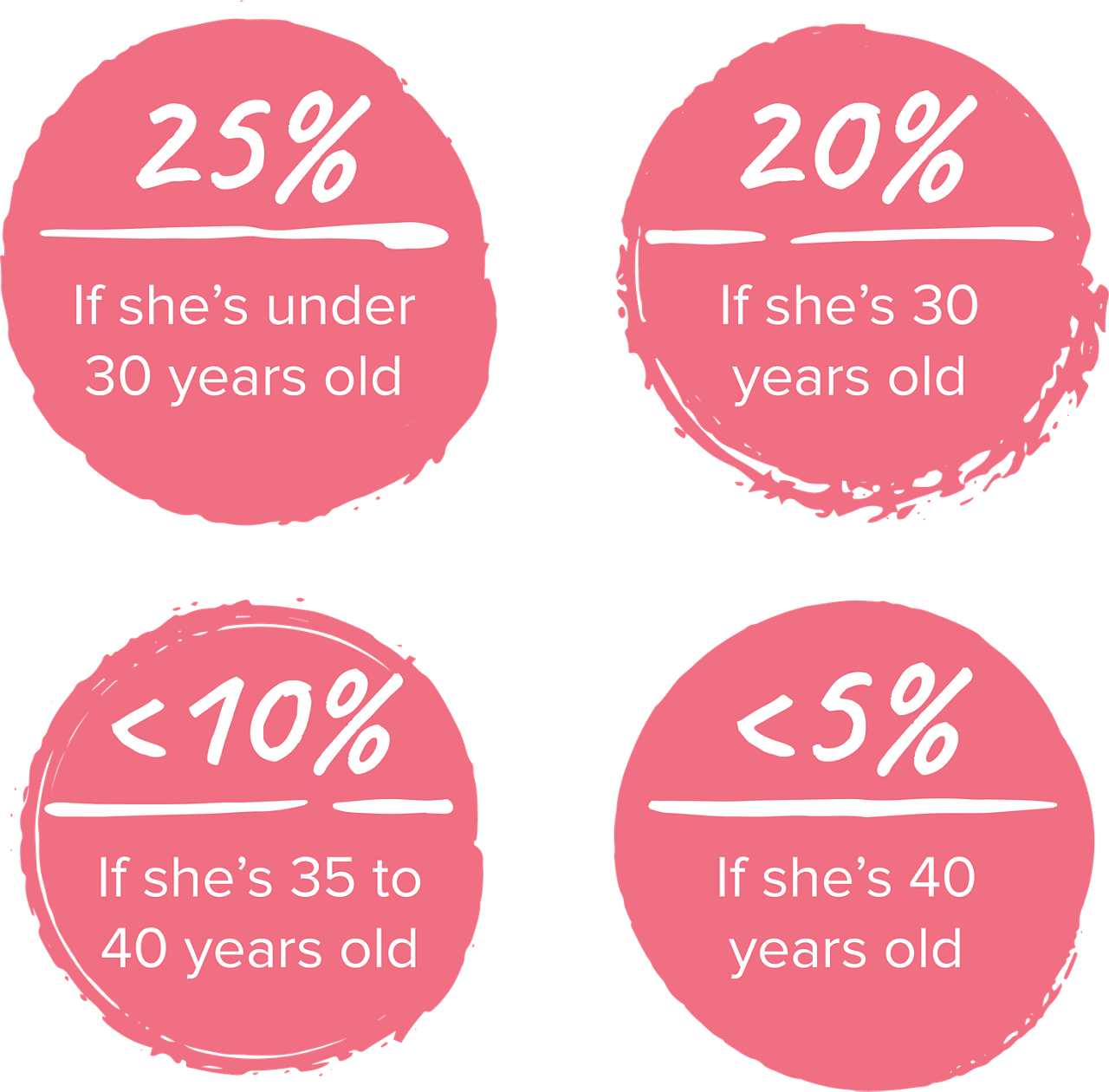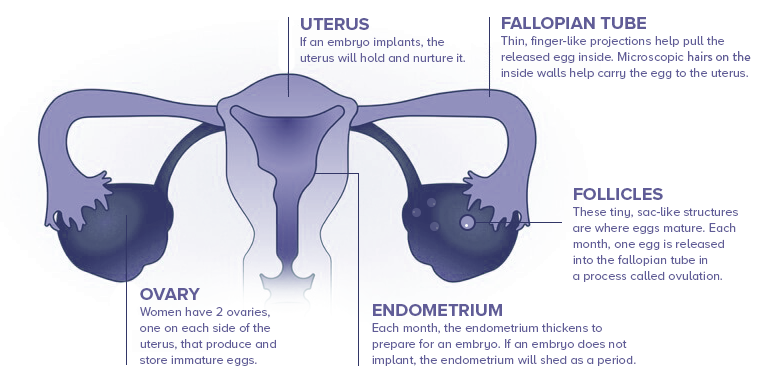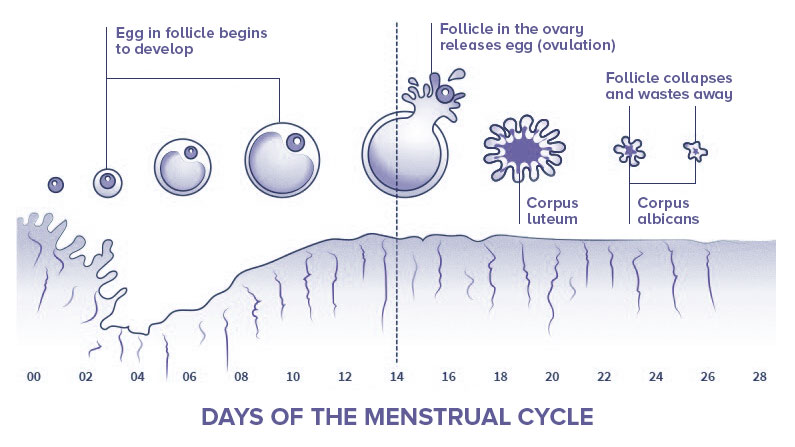My Fertility Story provides customized fertility and family-building resources to support you as you navigate your unique path to parenthood.
UNDERSTANDING HOW FERTILITY WORKS
WOMEN ARE MOST FERTILE IN THEIR 20s, WITH FERTILITY DECLINING OVER TIME. EACH MONTH, A HEALTHY WOMAN’S CHANCE OF PREGNANCY IS:

Although conception may be more difficult with age, pregnancy is still possible for many women. Understanding how the fertility cycle works can help improve your chances of becoming pregnant. Read on for a refresher on the female reproductive system, menstrual cycle, and the male’s role in conception.
UNDERSTANDING THE FEMALE REPRODUCTIVE SYSTEM

THE MENSTRUAL CYCLE, EXPLAINED
The female menstrual cycle typically lasts between 28 to 32 days and can be divided into 3 phases. Each phase helps prepare a woman’s body for possible pregnancy.

- The endometrium starts to shed and a period begins
- A gland inside the head, called the hypothalamus, releases gonadotropin-releasing hormone (GnRH)
- The ovaries mature several eggs inside their follicles with the help of 2 other hormones: follicle stimulating hormone (FSH) and luteinizing hormone (LH)
- Ovulation varies from person to person, but happens at or around day 14
- For it to occur, the pituitary gland releases a large amount of LH at once
- This causes the fastest-growing follicle to rupture and release a mature egg into the fallopian tube
- The mature egg can potentially be fertilized during this stage as it moves through the fallopian tube
- While this happens, the empty follicle left behind in the ovary starts to release the hormone progesterone
- This helps nourish and thicken the endometrium to prepare it should an embryo implant
- If implantation happens, the body produces human chorionic gonadotropin, or hCG, which tells the body it’s pregnant
- If fertilization does not happen, a period will occur as usual
5 FACTS ABOUT THE MALE REPRODUCTIVE SYSTEM
MORE ARTICLES

fertility facts
MORE FERTILITY PATIENT STORIES


This website is intended only for residents of the United States.
Use and access of this site are subject to the terms and conditions set out in our Legal Statement and Privacy Policy.
©2022 Merck KGaA, Darmstadt, Germany or its affiliates. All rights reserved. EMD Serono is the Healthcare business of Merck KGaA, Darmstadt, Germany in the U.S. and Canada. Fertility LifeLines is a trademark of Merck KGaA, Darmstadt, Germany or its affiliates.
US-NONF-00157 07/24
YOU ARE NOW LEAVING FERTILITY.COM
By clicking “Continue” below, you will be taken away from Fertility.com to a web site that may contain links or references to other web sites which our Privacy Policy may not apply. We encourage you to read the Privacy Policy of every web site you visit. You are solely responsible for your interactions with such web sites.


